Tapentadol
Aspadol 100 mg tablet is used to treat moderate to severe pain.
| Shipping time | 6-15 days |
|---|---|
| Active Ingredient | Tapentadol 100 mg |
| Lasts | 4-6 hours |
| Starts In | 30 min |
| Type | Pain relief |
| Strength | 100mg |
What is Tapentadol?
Tapentadol (Tapentadol) is an opioid pain medication. An opioid is sometimes called a narcotic.
Tapentadol is used to treat moderate to severe pain.
The extended-release form of Tapentadol is for around-the-clock treatment of pain that is not controlled by other medicines. It is not for use on an as-needed basis for pain.
Tapentadol may also be used for purposes not listed in this medication guide.
Tapentadol is an opioid. Opioids are narcotics. Tapentadol is a prescription pain reliever. Tapentadol extended-release (Nucynta ER) is used to treat chronic pain that is resistant to other treatments.
Common brand names: Tapal, Tydol, Nucynta, Palexia, Yantil, Tapenta, Aspadol,
Tapentadol indications
Tapentadol® ER (Tapentadol) is indicated for the management of:
- pain severe enough to require daily, around-the-clock, long-term opioid treatment and for which alternative treatment options are inadequate
- neuropathic pain associated with diabetic peripheral neuropathy (DPN) in adults severe enough to require daily, around-the-clock, long-term opioid treatment, and for which alternative treatment options are inadequate.
Tapentadol Limitations of Usage
- Because of the risks of addiction, abuse, and misuse with opioids, even at recommended doses, and because of the greater risks of overdose and death with extended-release opioid formulations, reserve Tapentadol® ER for use in patients for whom alternative treatment options (e.g., non-opioid analgesics or immediate-release opioids) are ineffective, not tolerated, or would be otherwise inadequate to provide sufficient management of pain.
- Tapentadol® ER is not indicated as an as-needed (prn) analgesic.
Tapentadol Palexia
Tapentadol for Palexia
Tapentadol – the active substance in PALEXIA – is a strong painkiller that belongs to opioids. PALEXIA is used in adults to treat moderate to severe pain of recent onset that can only be adequately managed with an opioid painkiller.
- Tapentadol Pain Relief Palexia
How should I use Tapentadol?
Use Tapentadol extended-release tablets as directed by your doctor. Check the label on the medicine for exact dosing instructions.
- Tapentadol extended-release tablets come with an extra patient information sheet called a Medication Guide. Could you read it carefully? Reread it each time you get Tapentadol extended-release tablets refilled.
- Take Tapentadol extended-release tablets by mouth with or without food. If stomach upset occurs, take with food to reduce stomach irritation.
- Tapentadol extended-release tablets must only be taken by mouth. Do not inject or snort Tapentadol extended-release tablets.
- Do not swallow more than 1 tablet at a time. If your dose requires more than 1 tablet, take only 1 tablet at a time.
- Swallow Tapentadol extended-release tablets whole. Do not break, cut, crush, chew, or dissolve the tablet before swallowing it. Contact your doctor if you cannot swallow Tapentadol extended-release tablets whole.
- Do not presoak, lick, or wet the tablet before you place it in your mouth. Take each tablet with enough water to be sure that it can be completely swallowed immediately after placing it in your mouth.
- Do not suddenly stop taking Tapentadol extended-release tablets. You may have an increased risk of withdrawal symptoms (e.g., nausea, vomiting, diarrhea, anxiety, shivering). If you need to stop Tapentadol extended-release tablets, your doctor will gradually lower your dose.
- Tapentadol extended-release tablets work best if it is taken at the same time(s) each day. Do not miss any doses.
- If you miss a dose of Tapentadol extended-release tablets, take it as soon as possible. If it is almost time for your next dose, skip the missed dose and go back to your regular dosing schedule. Do not take 2 doses at once. Do not take more than your prescribed dose in 24 hours.
Ask your health care provider any questions you may have about how to use Tapentadol extended-release tablets.
Tapentadol dosage
Tapentadol® oral solution is available in one concentration: 20 mg/mL.
Take care when prescribing and administering Tapentadol® oral solution to avoid dosing errors, which could result in accidental overdose and death. Take care to ensure the proper dose is communicated and dispensed. Include the dose in milliliters (mL) and milligrams (mg) when writing prescriptions. Always use the enclosed calibrated oral syringe when administering Tapentadol® oral solution to ensure the dose is measured and administered accurately.
Individualization Of Dosage
As with any opioid drug product, adjust the dosing regimen individually, taking into account the patient’s prior analgesic treatment experience. In the selection of the initial dose of Tapentadol, give attention to the following:
- the total daily dose, potency, and specific characteristics of the opioid the patient has been taking previously;
- the reliability of the relative potency estimate used to calculate the equivalent morphine sulfate dose needed;
- the patient’s degree of opioid tolerance;
- the general condition and medical status of the patient;
- concurrent medications;
- the type and severity of the patient’s pain;
- risk factors for abuse, addiction, or diversion, including a prior history of abuse, addiction, or diversion.
Therefore, the following dosing recommendations can only be considered suggested approaches to what is actually a series of clinical decisions over time in the management of each patient’s pain. Continual re-evaluation of the patient receiving Tapentadol is important, with special attention to the maintenance of pain control and the relative incidence of side effects associated with therapy. During chronic therapy, especially for non-cancer-related pain, periodically re-assess the continued need for the use of opioid analgesics.
During periods of changing analgesic requirements, including initial titration, frequent contact is recommended between physicians, other members of the healthcare team, the patient, and the caregiver/family. Monitor the patient for signs of respiratory or central nervous system depression.
Initiation Of Therapy
The dose is 2.5 mL (equivalent to 50 mg), 3.75 mL (equivalent to 75 mg), or 5 mL (equivalent to 100 mg) every 4 to 6 hours depending upon pain intensity.
On the first day of dosing, the second dose may be administered as soon as one hour after the first dose if adequate pain relief is not attained with the first dose. Subsequent dosing is 2.5 mL (equivalent to 50 mg), 3.75 mL (equivalent to 75 mg), or 5 mL (equivalent to 100 mg) every 4 to 6 hours and should be adjusted to maintain adequate analgesia with acceptable tolerability.
Daily doses greater than 700 mg on the first day of therapy and 600 mg on subsequent days have not been studied and are not recommended.
Tapentadol® may be given with or without food.
Renal Impairment
The Use of Tapentadol® in patients with severe renal impairment is not recommended.
No dosage adjustment is recommended in patients with mild or moderate renal impairment.
Hepatic Impairment
The safety and efficacy of Tapentadol® have not been studied in patients with severe hepatic impairment (Child-Pugh score 10-15), and use in this population is not recommended.
Initiate treatment of patients with moderate hepatic impairment (Child-Pugh Score 7 to 9) with 50 mg no more frequently than once every 8 hours (maximum of three doses in 24 hours). Further treatment should reflect maintenance of analgesia with acceptable tolerability, to be achieved by either shortening or lengthening the dosing interval.
No dosage adjustment is recommended in patients with mild hepatic impairment (Child-Pugh Score 5 to 6).
Elderly Patients
In general, recommended dosing for elderly patients with normal renal and hepatic function is the same for younger adult patients with normal renal and hepatic function. Because elderly patients are more likely to have decreased renal and hepatic function, consideration should be given to starting elderly patients with a lower recommended dose range.
Cessation Of Therapy
When the patient no longer requires therapy with Tapentadol, gradually taper the dose to prevent signs and symptoms of withdrawal in the physically dependent patient.
How to take tapentadol?
- Before starting the treatment of chronic pain, read the manufacturer’s printed information sheet inside the package. It will give you more information about tapentadol and will provide you with a complete list of side effects you may encounter from taking it.
- Take Tapentadol exactly as your doctor tells you. Instructions for taking it will be printed on the packaging label to remind you of what the doctor told you. The usual short-term acute pain relief dose is 50 mg every 4-6 hours if necessary. You will be provided with standard tablets or oral liquid medicine. If you take Tapentadol for a long-term painful condition, you will be prescribed a tablet brand called Palexia® SR (“SR” refers to the slow release as it was specially formulated to release the medicine slowly to give you more painkiller effect). You will need to take these tablets twice a day.
- There are many different strengths of tablets available, so every time you collect a new resource, it’s a good idea to check out the poster to make sure it’s the power you expect. If you are not sure, ask your pharmacist for advice.
- Swallow the tablet with a drink of water. You can take tapentadol (Nucynta) before or after food. Swallow the tablet whole – do not crush or chew Tabentadol tablets.
- If you forget to take a dose of this medicine, you should take it as soon as you remember. If you remember, it’s almost time for the next dose, then take the next dose when it’s due but leave the missed dose. Do not take two doses together to make up for the missed dose.
If you want to buy this medicine, you can Order Tapentadol Online directly here at our store.
Storage And Handling
Store up to 25°C (77°F); excursions permitted to 15° to 30°C (59° to 86°F). Store the oral solution bottle upright after opening.
Keep Tapentadol® in a secure place out of reach of children.
Tapentadol® oral solution that is no longer needed should be destroyed by flushing down the toilet.
Manufactured by: Patheon Pharmaceuticals, Inc. Cincinnati, OH 45237 Manufactured for Janssen Pharmaceuticals, Inc. Titusville, NJ 08560. Revised: November 2014
Tapentadol interactions
Tapentadol® is mainly metabolized by glucuronidation. The following substances have been included in a set of interaction studies without any clinically significant finding: acetaminophen, acetylsalicylic acid, naproxen, and probenecid.
Tapentadol’s pharmacokinetics were not affected when gastric pH or gastrointestinal motility was increased by omeprazole and metoclopramide, respectively.
Tapentadol Precautions
Pregnancy: Do not take this medicine if you are pregnant or plan to become pregnant.
Alcohol: Do not drink alcohol.
Driving: Do not drive, use tools or machinery if you feel drowsy, dizzy, have blurred vision, or a slow reaction time.
Kidney: Use with caution in patients with mild to moderate renal impairment. Not recommended for use in severe renal impairment.
LIver: Use with caution in patients with moderate hepatic impairment (dosage adjustment required). Not recommended for use in severe hepatic impairment.
Warnings!
To make sure this medicine is safe for you, tell your doctor if you have ever had:
- any breathing problem or lung disease
- a head injury, brain tumor, or seizures
- drug addiction, or mental illness
- urination problems
- problems with your gallbladder, pancreas, or thyroid
Alcohol, Other Opioids, And Drugs of Abuse
Due to its mu-opioid agonist activity, Tapentadol® may be expected to have additive effects when used in conjunction with alcohol, other opioids, or illicit drugs that cause central nervous system depression, respiratory depression, hypotension, and profound sedation, coma, or death. Instruct patients not to consume alcoholic beverages or use prescription or non-prescription products containing alcohol, other opioids, or drugs of abuse while on Tapentadol® therapy.
Monoamine Oxidase Inhibitors
Tapentadol® is contraindicated in patients receiving monoamine oxidase (MAO) inhibitors or who have taken them within the last 14 days due to potential additive effects on norepinephrine levels, which may result in adverse cardiovascular events.
CNS Depressants
Concurrent use of Tapentadol® and another central nervous system (CNS) depressants including sedatives or hypnotics, general anesthetics, phenothiazines, tranquilizers, and alcohol can increase the risk of respiratory depression, hypotension, profound sedation, or coma. Monitor patients receiving CNS depressants and Tapentadol® for signs of respiratory depression and hypotension. When such combined therapy is contemplated, start Tapentadol® at 1/3 to ½ of the usual dosage and consider using a lower dose of the concomitant CNS depressant.
Serotonergic Drugs
There have been post-marketing reports of serotonin syndrome with the concomitant use of Tapentadol and serotonergic drugs (e.g., SSRIs and SNRIs). Caution is advised when Tapentadol® is co-administered with other drugs that may affect serotonergic neurotransmitter systems such as SSRIs, SNRIs, MAOIs, and triptans. If concomitant treatment of Tapentadol® with a drug affecting the serotonergic neurotransmitter system is clinically warranted, careful observation of the patient is advised.
Mixed Agonist/Antagonist Opioid Analgesics
The concomitant use of Tapentadol® with mixed agonist/antagonists (e.g., butorphanol, nalbuphine, and pentazocine) and partial agonists (e.g., buprenorphine) may precipitate withdrawal symptoms. Avoid the use of agonist/antagonists and partial agonists with Tapentadol®.
Anticholinergics
The use of Tapentadol® with anticholinergic products may increase the risk of urinary retention and/or severe constipation, which may lead to paralytic ileus.
Drug Abuse And Dependence Controlled Substance
Tapentadol® contains Tapentadol, a Schedule II controlled substance with a high potential for abuse similar to fentanyl, methadone, morphine, oxycodone, and oxymorphone. Tapentadol® is subject to misuse, abuse, addiction, and criminal diversion.
Abuse
All patients treated with opioids require careful monitoring for signs of abuse and addiction because the use of opioid analgesic products carries the risk of addiction even under appropriate medical use.
Drug abuse is the intentional non-therapeutic use of an over-the-counter or prescription drug, even once, for its rewarding psychological or physiological effects. Drug abuse includes but is not limited to the following examples: the use of a prescription or over-the-counter drug to get “high” or steroids for performance enhancement and muscle build-up.
Drug addiction is a cluster of behavioral, cognitive, and physiological phenomena that develop after repeated substance use and include: a strong desire to take the drug, difficulties in controlling its use, persisting in its use despite harmful consequences, a higher priority given to drug use than to other activities and obligations, increased tolerance, and sometimes a physical withdrawal.
“Drug-seeking” behavior is widespread in addicts and drug abusers. Drug-seeking tactics include emergency calls or visits near the end of office hours, refusal to undergo appropriate examination, testing or referral, repeated claims of loss of prescriptions, tampering with prescriptions, and reluctance to provide prior medical records or contact information for other treating physician(s). “Healthcare professional shopping” (visiting multiple prescribers) to obtain additional prescriptions is common among drug abusers, people suffering from untreated addiction, and criminals seeking drugs to sell.
Abuse and addiction are separate and distinct from physical dependence and tolerance. Physicians should be aware that addiction may not be accompanied by concurrent tolerance and symptoms of physical dependence in all addicts. Also, abuse of opioids can occur in the absence of true addiction and is characterized by misuse for non-medical purposes, often combined with other psychoactive substances.
Tapentadol® can be diverted for non-medical use into illicit channels of distribution. Careful record-keeping of prescribing information, including quantity, frequency, and renewal requests, as required by law, is strongly advised.
Proper assessment of the patient, proper prescribing practices, periodic re-evaluation of therapy, and proper dispensing and storage are appropriate measures that help to limit abuse of opioid drugs.
Dependence
Both tolerance and physical dependence can develop during chronic opioid therapy. Tolerance is the need for increasing doses of opioids to maintain a defined effect such as analgesia (in the absence of disease progression or other external factors). Tolerance may occur to both the undesired effects of drugs and may develop at different rates for different effects.
Physical dependence results in withdrawal symptoms after abrupt discontinuation or a significant dose reduction of a drug. Withdrawal also may be precipitated through the administration of drugs with opioid antagonist activity, e.g., naloxone, nalmefene, or mixed agonist/antagonist analgesics (pentazocine, butorphanol, buprenorphine, nalbuphine). Physical dependence may not occur to a clinically significant degree until after several days to weeks of continued opioid usage. Some or all of the following can characterize this syndrome: restlessness, lacrimation, rhinorrhea, yawning, perspiration, chills, piloerection, myalgia, mydriasis, irritability, anxiety, backache, joint pain, weakness, abdominal cramps, insomnia, nausea, anorexia, vomiting, diarrhea, increased blood pressure, respiratory rate, or a fast heartbeat. Withdrawal symptoms may be reduced by tapering Tapentadol®.
Infants born to mothers physically dependent on opioids will also be physically dependent and may exhibit respiratory difficulties and withdrawal symptoms.
Tapentadol side effects
- headache
- heartburn
- stomach pain
- dry mouth
- excessive tiredness
- anxiety
- drowsiness
- difficulty falling asleep or staying asleep
- abnormal dreams
- irritability
- a sudden feeling of warmth
- rep
Report side effects to your doctor or health specialist
Clinical Studies Experience
Because clinical trials are conducted under widely varying conditions, adverse reaction rates observed in the clinical trials of a drug cannot be directly compared to rates in the clinical trials of another drug and may not reflect the rates observed in clinical practice. Based on data from nine Phase 2/3 studies that administered multiple doses (seven placebo- and/or active-controlled, one noncontrolled and one Phase 3 active-controlled safety study) the most common adverse reactions (reported by ≥ 10% in any Tapentadol® dose group) were: nausea, dizziness, vomiting, and somnolence.
The most common reasons for discontinuation due to adverse reactions in the studies described above (reported by ≥ 1% in any Tapentadol® dose group) were dizziness (2.6% vs. 0.5%), nausea (2.3% vs. 0.6%), vomiting (1.4% vs. 0.2%), somnolence (1.3% vs. 0.2%) and headache (0.9% vs. 0.2%) for Tapentadol®- and placebo-treated patients, respectively.
Seventy-six percent of Tapentadol®-treated patients from the nine studies experienced adverse events.
Tapentadol® was studied in multiple-dose, active- or placebo-controlled studies, or noncontrolled studies (n = 2178), in single-dose studies (n = 870), in open-label study extension (n = 483) and in Phase 1 studies (n = 597). Of these, 2034 patients were treated with doses of 50 mg to 100 mg of Tapentadol® dosed every 4 to 6 hours.
The data described below reflect exposure to Tapentadol® in 3161 patients, including 449 exposed for 45 days. Tapentadol® was studied primarily in placebo- and active-controlled studies (n = 2266, and n = 2944, respectively). The population was 18 to 85 years old (mean age 46 years), 68% were female, 75% white, and 67% were postoperative. Most patients received Tapentadol® doses of 50 mg, 75 mg, or 100 mg every 4 to 6 hours.
Table 1 Adverse Reactions Reported by ≥ 1% of Tapentadol®-Treated Patients In Seven Phase 2/3 Placebo- and/or Oxycodone-Controlled, One Non-controlled, and One Phase 3 Oxycodone-Controlled Safety, Multiple-Dose Clinical Studies
Post-marketing Experience
The following additional adverse reactions have been identified during post-approval use of Tapentadol®. Because these reactions are reported voluntarily from a population of uncertain size, it is not always possible to estimate their frequency reliably.
Gastrointestinal disorders: diarrhea
Psychiatric disorders: hallucination, suicidal ideation, panic attack
Cardiac disorders: palpitations
Anaphylaxis, angioedema, and anaphylactic shock have been reported very rarely with ingredients contained in Tapentadol®. Advise patients how to recognize such reactions and when to seek medical attention.
Tapentadol contraindications
What is the most important information I should know about Tapentadol?
You should not use this medication if you are an allergic reaction to Tapentadol. If you have severe liver or kidney disease, if you are having an asthma attack, or have a bowel obstruction called paralytic ileus.
Do not use Tapentadol if you have used an MAO inhibitor such as furazolidone (Furoxone), isocarboxazid (Marplan), phenelzine (Nardil), rasagiline (Azilect), selegiline (Eldepryl, Emsam, Zelapar), or tranylcypromine (Parnate) in the last 14 days. A dangerous drug interaction could occur, leading to serious side effects.
Tapentadol may be habit-forming and should be used only by the person it was prescribed for. Keep the medication in a secure place where others cannot get to it.
Do not drink alcohol while you are taking Tapentadol. Dangerous side effects or death can occur when alcohol is combined with narcotic pain medicine. Check your food and medicine labels to be sure these products do not contain alcohol.
Never take Tapentadol in larger amounts, or for longer than recommended by your doctor. Tell your doctor if the medicine seems to stop working as well in relieving your pain.
This medication may impair your thinking or reactions. Avoid driving or operating machinery until you know how Tapentadol will affect you.
Do not stop using Tapentadol suddenly, or you could have unpleasant withdrawal symptoms. Ask your doctor how to avoid withdrawal symptoms when you stop using Tapentadol.
Active ingredient matches for Tapentadol:
Tapentadol
Unit description / dosage (Manufacturer)Price, USD Tablet; Oral; Tapentadol Hydrochloride 50 mg Tablet; Oral; Tapentadol Hydrochloride 75 mg Tablet; Oral; Tapentadol Hydrochloride 100 mg
Nucynta, Tapentadol Important information
You should not use Nucynta if you have severe breathing problems or a bowel obstruction called paralytic ileus.
Do not use Nucynta if you have used an MAO inhibitor in the past 14 days. A dangerous drug interaction could occur. MAO inhibitors include isocarboxazid, linezolid, methylene blue injection, phenelzine, rasagiline, selegiline, or tranylcypromine.
Tapentadol can slow or stop your breathing, especially when you start using this medicine or whenever your dose is changed. Never take this medicine in larger amounts, or for longer than prescribed. Do not crush, break, or open an extended-release tablet. Swallow it whole to avoid exposure to a potentially fatal dose.
Tapentadol may be habit-forming, even at regular doses.
Take this medicine exactly as prescribed by your doctor. Never share the medicine with another person. MISUSE OF NARCOTIC PAIN MEDICATION CAN CAUSE ADDICTION, OVERDOSE, OR DEATH, especially in a child or other person using the medicine without a prescription.
Tell your doctor if you are pregnant.
Nucynta may cause life-threatening withdrawal symptoms in a newborn if the mother has taken this medicine during pregnancy.
Fatal side effects can occur if you use this medicine with alcohol or other drugs that cause drowsiness or slow your breathing.
References
- PubChem. “Tapentadol.” pubchem.ncbi.nlm.nih.gov
- DrugBank. “Tapentadol.” drug bank
- MeSH. “MeSH Tree: MeSH (Medical Subject Headings) PubMed.”. nlm.nih.gov.
Related links:
Read more about Tapentadol here.
Read more about Nucynta here: Nucynta Info.
Tapentadol News
Tapentadol is ‘Third-Tier’ Drug for Diabetic Neuropathic Pain
User Reviews for Tapentadol
Tramadol and Tapentadol: Ultram and Nucynta

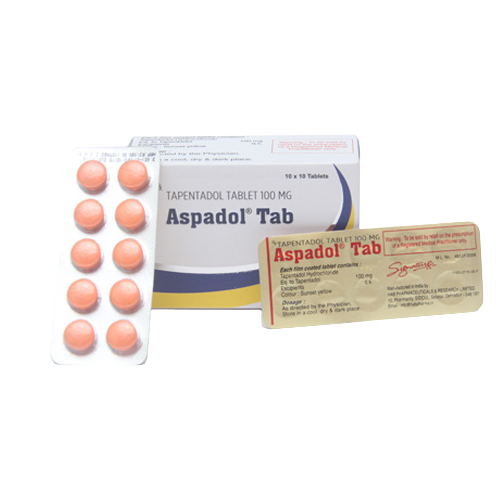
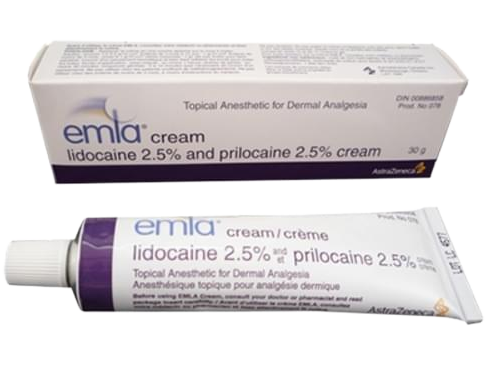
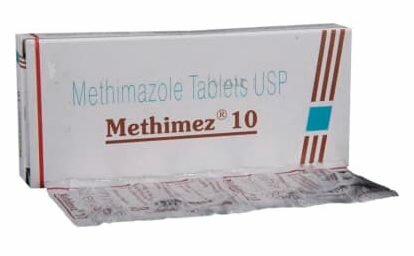
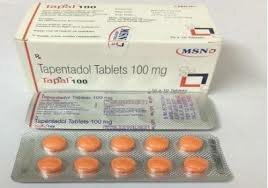
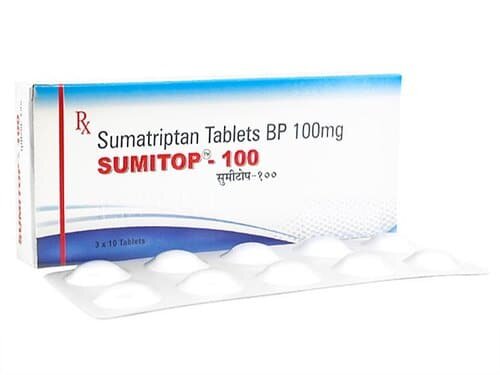
There are no reviews yet.